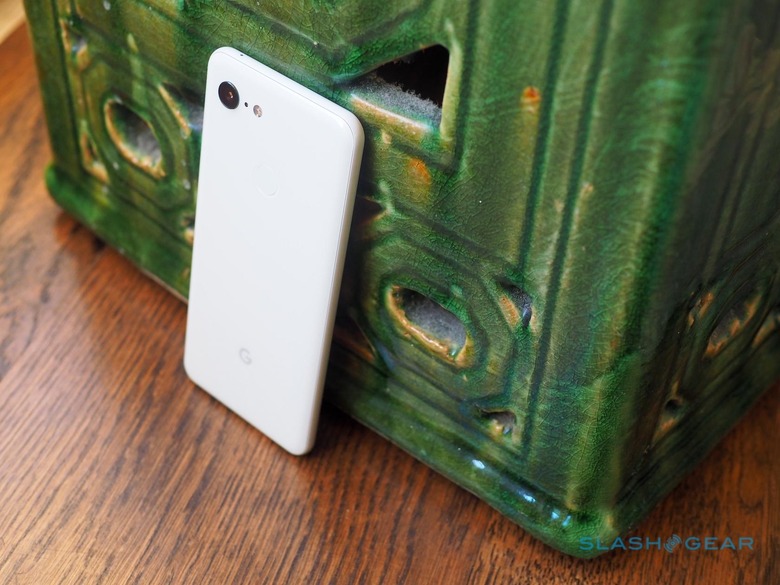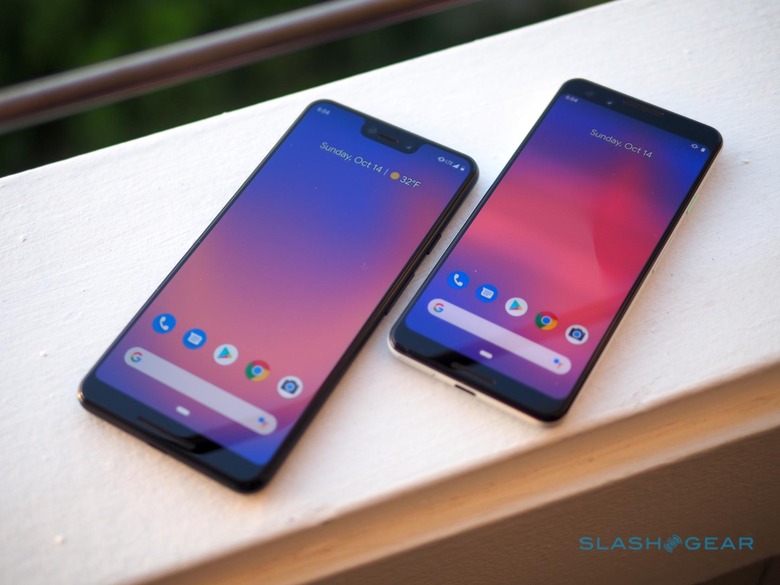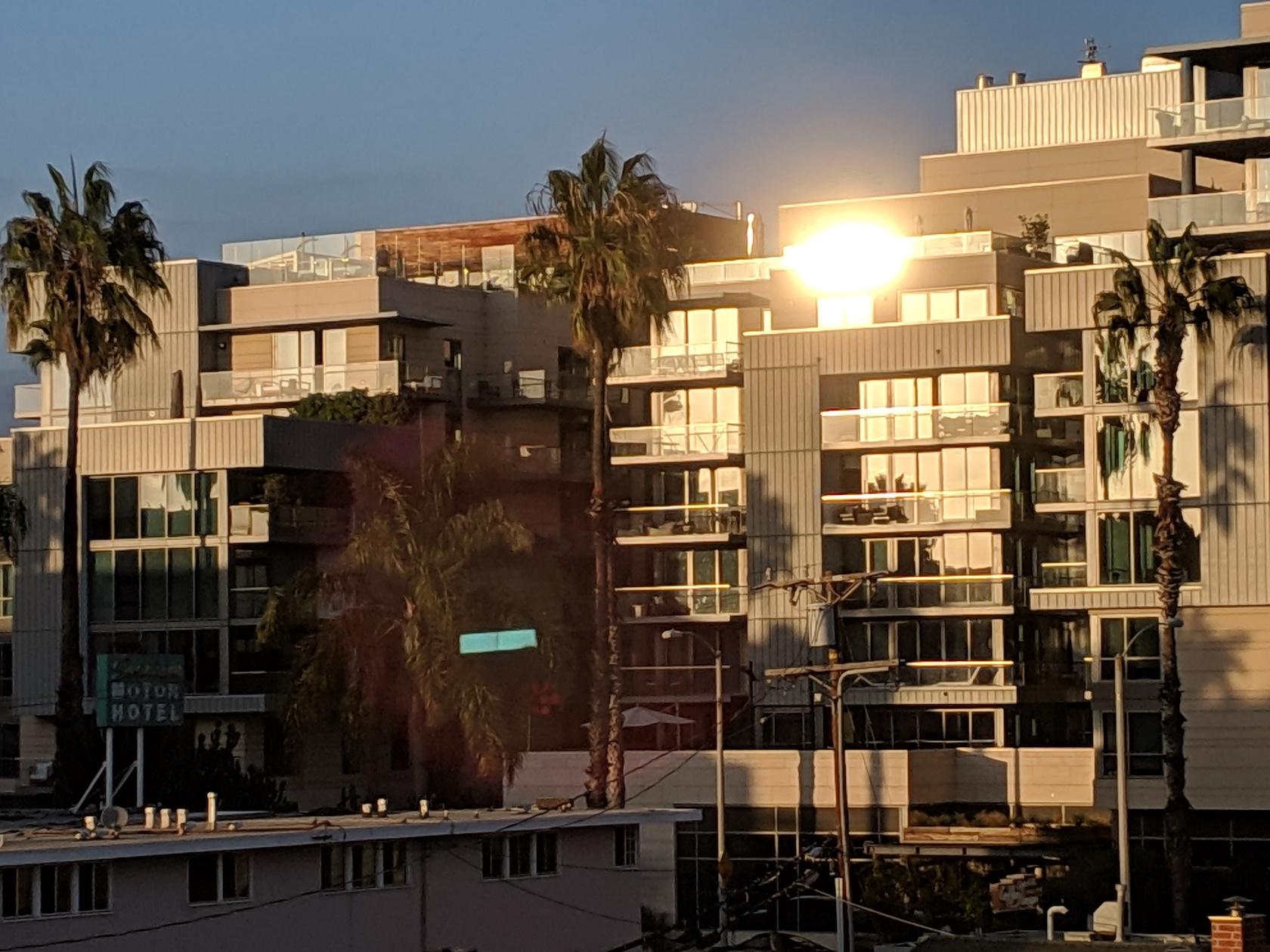Google Pixel 3 Review: Picture Greatness
- Camera technology leads the pack
- Elegant, tactile glass & metal design
- Wireless charging is a welcome addition
- OLED screens look great
- Pixel 3 XL notch is divisive
- More expensive than last year's Google phones
- Still no headphone jack
It's a testament to just how high expectations are for the Pixel 3 and Pixel 3 XL that, even after months of the Google phones leaking, interest in them remains high. Now, the pair of Android 9 Pie handsets are finally headed to shelves, promising the cutting-edge in Google's computational photography, the latest and greatest in software, and a more cohesive and premium-feeling design. Ambitious, certainly, but also more expensive than the phones they replace. Question is, has Google done enough to warrant both that excitement and that price premium?
Familiar design, but elevated
At first glance the design cues from last year's Google phones are clear in the new Pixel 3 and Pixel 3 XL. Look closer, though, and you'll see how the aesthetic has been cleaned up. The edges, an aluminum frame with what Google is describing as a "hybrid coating," feel soft and nicely curved. Sandwiching it are two sheets of Gorilla Glass 5.

Gone is the mixed metal and glass on the rear of the old handsets. The two-tone finish, matte and gloss, remains, but now Google does that with a soft-touch etching. I was a little concerned at how readily it picks up scratches and scuffs, but most of the time you can just rub those minor marks off. Still, as with any glass-bodied phone, you'll probably want to cosset it in a case.
It's the detailing which delights. The Clearly White and Not Pink models get contrasting power buttons – orange on the former, a minty green on the latter – while the Just Black remains soberly monochromatic. Our hopes for a striking red accent color remain dashed for another year at least.

At the bottom is the USB-C port for charging, alongside the SIM card slot. Still no microSD card support – though you get unlimited full-resolution Google Photos backup through 1/31/2022 – but Google has added eSIM compatibility. If your carrier supports it, you could have a second, virtual SIM for a different line, for example, or leave the physical SIM slot open for a local prepaid card when you're traveling internationally.

Of course, some of the same frustrations of 2017 are just as prevalent now. The absence of the 3.5mm headphone jack still rankles, though at least Google includes an adapter – now promising less latency and more power efficiency – unlike Apple and the iPhone XS. Despite Google's new front camera array there's none of the 3D face mapping magic that Face ID does for security; instead you get the regular fingerprint sensor on the back for biometric access.
That darned notch
It must be a tradition now for the larger of the two Pixel phones to have some sort of controversy around its display. Last year it was the Pixel 2 XL's odd colors; this year, it's the Pixel 3 XL's notch. While Google was able to push out a firmware update to tweak the 2 XL's OLED, however, there's no software that can fill that cut-out with display.

As I've said before, I'm no notch-hater. I rarely notice it on the iPhone XS Max; it's practically surreptitious on LG's V40 ThinQ. The Pixel 3 XL's 6.3-inch panel, however, suffers a combination of odd notch dimensions – it's deep, but relatively narrow – that, I suspect, conspire to make it more obtrusive. Even if it's not particularly getting in the way of your apps, web browsing, or media playback, you just see it more.

Look past it – as, I suspect, many will, either with conscious effort or simply by getting used to it over time – and you have an excellent 2690 x 1440 OLED screen, with HDR support. Colors are bright, contrast levels are great, and all the richness of darker hues we've come to expect from OLED are present and correct. By default, Google sets the screen to its new "Adaptive" color mode, but there are "Natural" (sRGB) and "Boosted" (sRGB + 10%) if you want something a little less saturated.
Smaller might be better
What, though, if you can't get past that cut-out? 2018's smaller Pixel also involves a smaller compromise over last year, with the Pixel 3's 5.5-inch display feeling far less pokey than its 5-inch predecessor. Yes, you take a step down to 2160 x 1080 resolution, but that's still just dandy on a screen of this size.

In return, you don't have to worry about notches or interface quirks. Don't just think of the Pixel 3 as Google's sop to those refusing to accommodate the larger phone's foibles, mind. There's a lot to be said for a more compact phone.
Unlike so many "smaller" versions of flagships we've seen in the past few years, the Pixel 3 makes no real compromise beyond resolution. You get the same overall aesthetic, the same Snapdragon 845 processor and 4GB of memory, the same cameras, software experience, and storage. The battery is a little smaller – more on that later – but then again the screen is less power-hungry.

More than that, it just feels better in the hand. I still wish Google had been able to trim the top and bottom bezels a little more, but there's no denying that, in a world of massive phablets, the way the Pixel 3 nestles into your paw is a delightful change. Using Android one-handed becomes entirely practical.
A big slice of Android 9.0 Pie
Android 9.0 Pie won't be a Pixel 3 exclusive, of course, but there's no denying that Google's purest vision of its OS will be delivered on its own handsets. Like before, there are features like Now Playing – which identifies the currently playing song discreetly on the lock screen – and the always-on display. Pie, though, puts the quick search bar down low on the home screen, and introduces a new set of gestures for navigation.
No more Android home button, or app-switcher. Instead, you swipe up on the home button to open the app drawer, or pull up the recent apps. As an iPhone XS Max user the gestures came fairly naturally to me, and they've much improved on the Pixel 3 than previous releases on the Pixel 2 and Essential Phone. A lot of the jerkiness and lag has been smoothed away, leaving you to enjoy things like being able to interact with apps even when they're in the "Overview" switcher view.

Otherwise, the features typically build progressively on what we've seen before. Google Lens, for instance, now promises visual search of clothing and decor, text translations, and automatic landmark identification. It'll also pull out information from business cards, QR codes, and printed URLs. I'm sure there are people out there making good use of Google Lens, but so far I'm not really one of them. Visual search just isn't the first thing I reach for when I need to find something online.
The truly wowing demo during the Pixel 3 event was Google Assistant call screening. Taking technology previewed with Google Duplex, it allows you to shunt incoming calls over to the AI, and have questions like who is calling, what they want, and other factors answered while you simply monitor the transcript. It should be a boon if you're averse, as I am, to answering calls with no Caller ID, though Google warned me that the early transcription model may not be perfect. It's also setting expectations fairly conservatively: this isn't, the company points out, intended to be a replacement to text messaging.
A class-leading camera
Is the Pixel 3 a phone with a great camera, or a camera that just so happens to have a smartphone attached? There's no denying that, of all Google's developments in hardware and software, the Pixel range has become defined by the strength of its photography experience. For 2018, it's doubling-down on the key differentiator between it and rival flagships.

Where other phones are sprouting more and more sensors, Google sticks resolutely to its single, 12.2-megapixel dual-pixel camera on the rear. Packing optical and digital image stabilization, dual-pixel phase detection autofocus, and an f/1.8 aperture, it's capable of 4k 30fps video recording (or 1080p at up to 120fps, or 720p at up to 240fps).
Expectations are, unsurprisingly, high for the Pixel 3's camera, and for the most part it delivers. Shots show great dynamic range, with Google using its OIS well to deliver bright, detailed images with minimal noise. Of course, what we were really curious about was the computational photography.

It's fair to say that Google's edge-detection algorithms are incredible by this point. My go-to test for smartphone portrait modes is my cat, a furred goddess among mortals, whose whiskers are an excellent challenge. Typically, even generally adept dual-camera devices – the iPhone XS Max included – struggle to differentiate fine detail, the result being truncated whiskers, patches of unblurred background like webbing between foreground elements, or just a general fuzz that spoils the whole illusion.

The Pixel 3's portrait mode isn't perfect, but it's very, very good. While it may not isolate each whisker, it often does a far better job than most at smoothing the transition around them. The result is a picture that can look far less jarring than other phones deliver. In other shots, it's only when you look closely that you realize Google's algorithms have actually captured more detail than you realized was there in the first place. The subtle cobweb between these leaves is an excellent example.

Pulling out gems from your otherwise humdrum photography is something of a theme for the Pixel 3, in fact. Often, when you think you're taking one picture, you're actually capturing many. In HDR+ mode, on by default, for instance, up to eight shots of different exposures and settings are combined to maximize the contrast and detail in the final frame.
Other times, you're presented with multiple images of the same scene. Top Shot relies on the Pixel 3 grabbing a sequence of images, and then lets you choose the best – where everybody has their eyes open, maybe, or are smiling, or their perfect dive is just breaking the water – later on. The AI will even flag a "better" image from the set if it suspects you've missed it.
What I expected to miss the most versus other recent phones was an optical zoom. In its place, Google offers Super Res Zoom, which manages to be the perfect example of technology taking advantage of our frail human shortcomings.

Turns out, we're pretty terrible at holding things steady: our hands shake, constantly, sometimes with movements so slight that we don't notice, but enough for Google's algorithms to piggy-back on the wobbling. In effect taking advantage of those shifts in framing to pick up extra data about the scene, it promises an optical zoom-like level of quality.
The reality depends, as you might expect, on how closely you zoom in. Google says that 2x magnification will see the best results, though the algorithms will attempt to do their best at levels beyond that. It looks surprisingly good, too; not quite at the point of a dedicated optical zoom, but better than any digital zoom I've seen before.
Then there's Motion Auto Focus. Capable of tracking a subject around a scene, I'd expected this to be most useful in videos, but it's actually even more effective in still shots. Tapping a subject will not only lock the focus on that point, but the Pixel 3 will also follow its movements. That way, when you finally do take a shot, there's as great a chance as possible that it will be in focus.
Perhaps the most intriguing new photo feature, we can't test yet, though. Night Sight promises to do away with either unevenly lit low-light flash photography, or just plain murky shots, by wielding Google's computational talents on night scenes. The result, Google claims, is a far clearer shot. We'll have to wait a while to try it out, however.
On the front, meanwhile, there are now two sensors: each 8-megapixels, but one with an f/1.8 aperture and 75-degree field of view, while the other has an f/2.2 aperture and 97-degree field of view. The former gets phase detection autofocus, while the latter is fixed focus. The idea is to fit in more people in your group selfies, with the Pixel 3 automatically correcting the fish-eye effect that a wide angle lens of this sort would typically suffer from.

There's a noticeable change in just how much you can fit in the frame in wide-angle view, certainly. Depending on how many friends you want to accommodate, or how much of the background scenery you'd like to have visible, that can be a big improvement. All the same, I can't help but think that Google could've done all this with one front-facing camera, cropping it for the "regular" perspective. The fact that the Pixel 3 doesn't get a facial scanning feature like Face ID on the iPhone XS makes the presence of the notch on the Pixel 3 XL all the more bemusing.
Battery life
The Pixel 3 has a 2,915 mAh battery, while the Pixel 3 XL steps that up to 3,430 mAh. In practice, I've seen similar runtimes from both phones: a solid day of use, with enough to get me through the evening without going hunting for the charger. Even when I do, there's fast charging that delivers up to seven hours of use after 15 minutes plugged into the standard 18W charger included in the box.

More interesting, though, is the Pixel Stand. That's Google's wireless charger, taking advantage of the fact that the Pixel 3 is the first in its lineage to support the Qi standard. The $79 dock props the phone upright, but also triggers a new interface.
How much it shows depends on what access you give it. If you want, you can have photos from Google Photos cycle through, have hands-free access to the Google Assistant much in the way that a Google Home smart speaker works, and get calendar and other details. If you've set up smart home routines – turning the lights off and locking the doors, for instance – you can trigger those, too.

It's a neat accessory, though it's fairly expensive for a Qi charger. Better, then, to think of it as more of a dock that just so happens to charge, than a charger first. At 10W it's a little slower than the wired charger Google includes, though it will charge the Pixel 3 in either portrait or landscape orientation.
Verdict
Expectations for the Pixel 3 and Pixel 3 XL were high. It's a testament to the anticipation surrounding these two Android phones that, even with numerous leaks spoiling the surprise months in advance of Google's big reveal, interest has remained strong. Happily, therefore, the reality is much in line with what would-be users were hoping for.

More usable displays, slicker-feeling hardware, the cutting-edge of Android software, and that fiendishly clever camera technology all add up to a pair of phones which thoroughly earn their place in the pantheon of 2018's greatest handsets. Google's computational photography is a reminder of just how strong a role software plays, and how throwing more hardware into a device can not only be equaled by a software-hardware combo, but in some ways exceeded. At a time when we're seeing four rear cameras on smartphones, Google's strategy is all the more outrageous – and impressive.
If there's a downside, it's that the focus on software may cost Google a few sales. Many of the photo features – among others – will be coming to the Pixel 2 and Pixel 2 XL as an update, begging the question of whether it's worth upgrading or simply holding out for the latest firmware. If you're an existing Pixel owner, it's probably wise to see just how significantly improved your current device is after that update, before digging deep for a new phone.

That brings me to the last complaint. The Pixel 3 and Pixel 3 XL aren't, frankly, cheap. The former starts at $799 for a 64GB model; the latter from $899. Cheaper, yes, than an iPhone XS or Samsung Galaxy Note 9, but still at the premium end of the market and some distance from where Google started things out with the original Pixels and, indeed, its Nexus phones before that.
Flagship phones command flagship price tags, however, and there's plenty the Pixel 3 and Pixel 3 XL can do to distract you from the hole in your bank account. Google's computational photography is, I think, the most interesting part of the modern smartphone camera race. The fact that it's bundled with cutting-edge Android and two phones that are sleek and crisply designed is the icing on the proverbial cake.

Make no mistake, if you're an Android user then there needs to be a very good reason not to have the Pixel 3 and Pixel 3 XL at the top of your upgrade list in 2018. Indeed the biggest decision is figuring out whether the Pixel 3 XL's notch is as much of a deal-breaker as some say it is. That comes down to personal opinion, as does whether you prefer the more hand-friendly scale of the Pixel 3 or its expansive bigger sibling.
What isn't up for question is how polished the overall experience is for both devices. Last year's Google phones showed us just what the company could do with software. Now, the Pixel 3 and Pixel 3 XL wrap that in a far more premium-feeling design, and feel all the more cohesive as a result.










